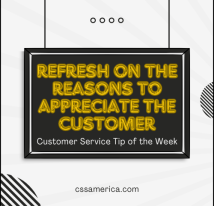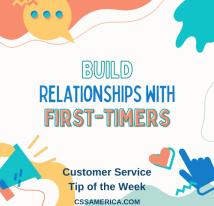The hospital promoted the 3 C’s: Compassionate Competent Care. The Care was what they provided – patient care, clinical care. Competent denoted that there was quality to what they provided. Compassionate signified. . .well. . .compassion.
So what is “Compassion” in customer service, and how does it apply even outside of healthcare?
There are several definitions of compassion, but the overriding one that applies to customer service is “sympathy, empathy, and concern for others, particularly for their issues or misfortune.” Customers want you to care for them, particularly when they’re in a tough situation. So you want to be compassionate.
Based on this definition of compassion, ask yourself a few questions. Are you aware of the customer’s issues? Are you understanding of their misfortunes? And just as importantly, how do you convey your understanding and concern?
There are ways to convey compassion with your words/phrases. Use these words frequently in dialogue with the customer to convey compassion for their issue/misfortune:
- “Your issue” or “Your concern”
- “You” used in a personal reference
- “I understand”
- “I care”
- “I’m sorry”
- “I’m concerned.”
What aspects of body language and tone of voice convey compassion?
- Offer a gentle touch on the back or shoulder
- Provide eye contact
- Periodically nod your head
- Acknowledge/engage the customer and their family/friends
- Sit/kneel to customer’s eye level
- Lean toward the customer rather than away or toward the door
- Use a more quiet tone
- Avoid utterances while customer is talking.
To be compassionate, use the words and non-verbal communications that convey you care.
Convey Compassion in Customer Service.





















